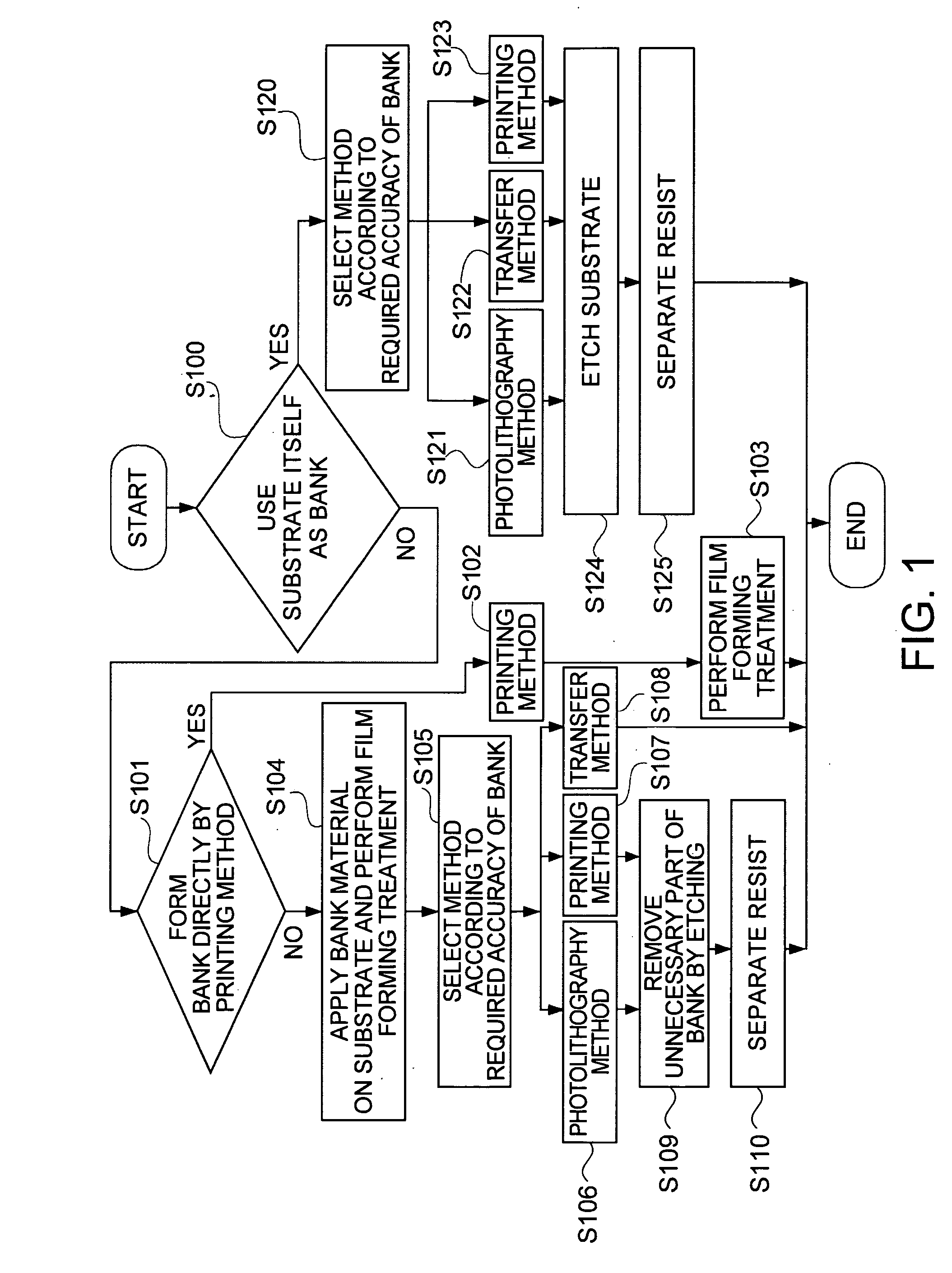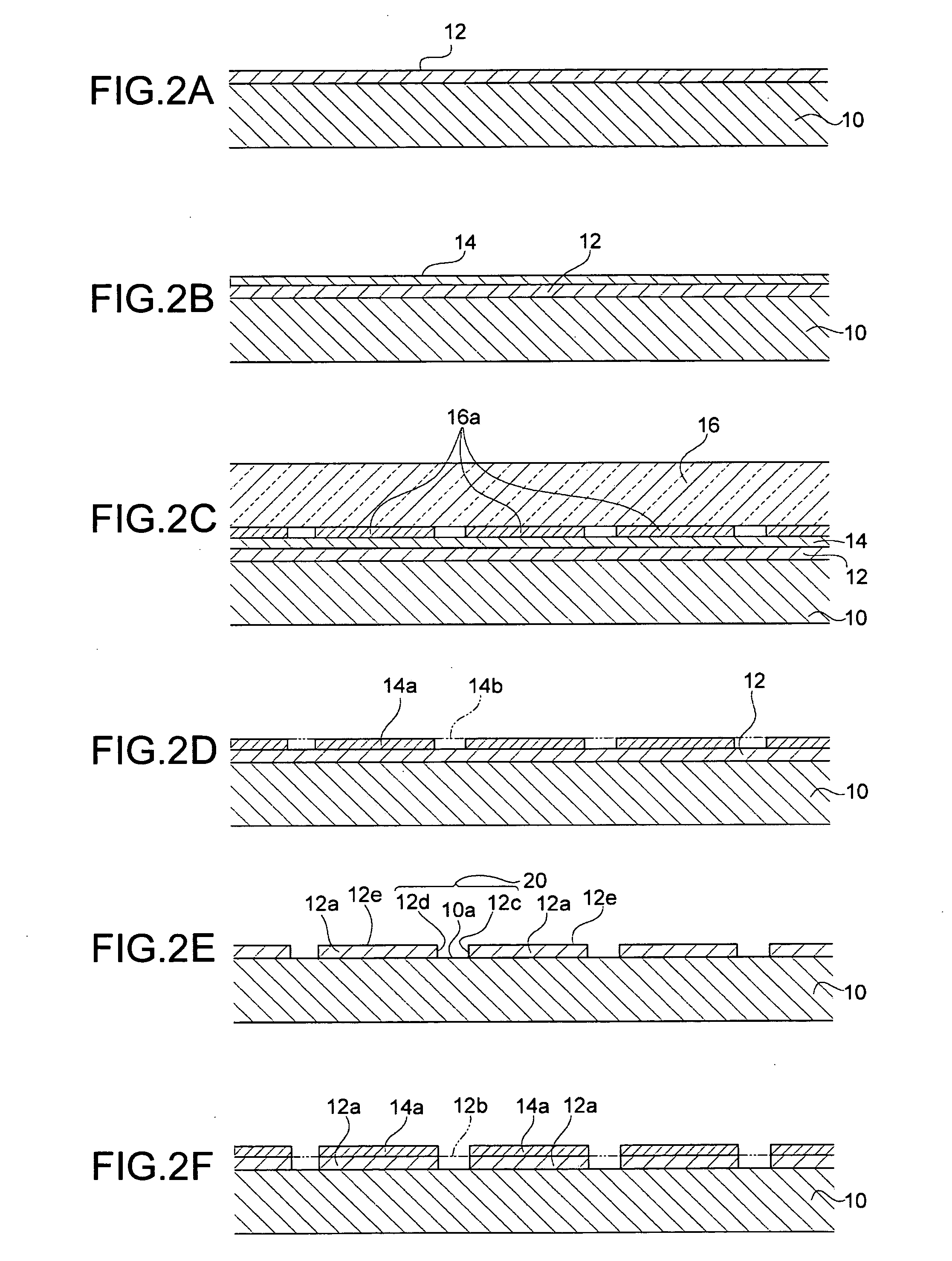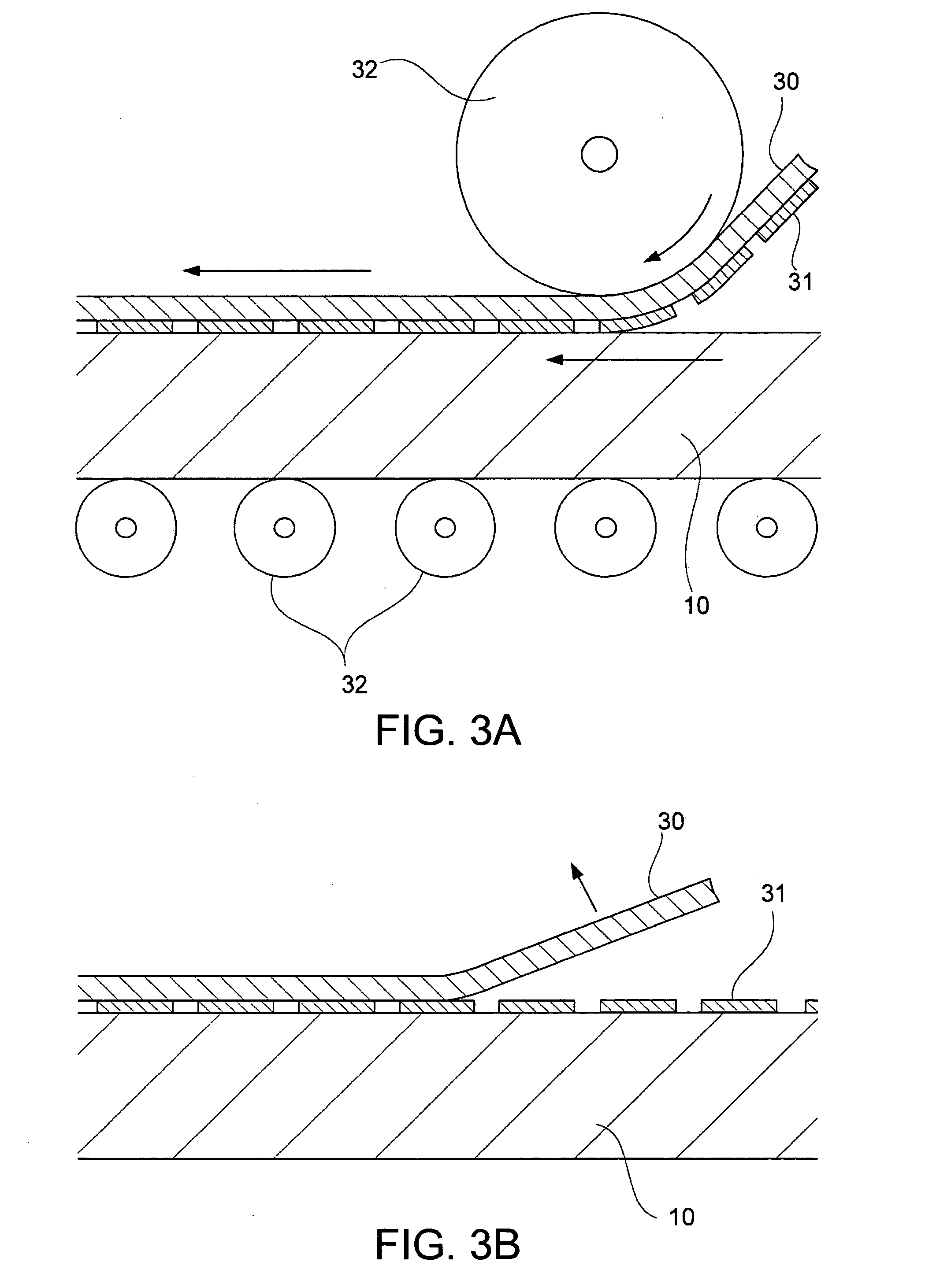Method of forming conductive pattern
a technology of conductive pattern and conductive pattern, which is applied in the direction of nuclear engineering, transportation and packaging, railway signalling, etc., can solve the problems of inability to secure the conductive pattern with sufficient thickness, limited amount of ink, and inability to hold ink, etc., and achieves convenient formation, small width, and large thickness
- Summary
- Abstract
- Description
- Claims
- Application Information
AI Technical Summary
Benefits of technology
Problems solved by technology
Method used
Image
Examples
first embodiment
[0052] A first embodiment of the invention describes a process of forming a substrate and a bank on the substrate to which a method of forming a conductive pattern is applied, a process of giving lyophilicity to the substrate and a part or whole of bank, and a process of applying a lyophobic agent to a part or whole of an upper face of the bank.
[0053] Flowchart of Process of Forming Substrate and Bank on the Substrate
[0054]FIG. 1 is a flow chart of a process of forming a substrate and a bank on the substrate. In this embodiment, whether the substrate itself is used as the bank or not will be chosen in Step (hereinafter denote as “S”) 100. When the substrate is not used as the bank, go to S101. When the substrate itself is used as the bank, go to S120.
[0055] As for the substrate, the following material can be used; transparent or translucent inorganic substrate materials such as glass and silica, monocrystal or non-monocrystal semiconductor substrate materials such as diamond, sil...
second embodiment
[0175] Next, a second embodiment is described with reference to the figures.
[0176] Only different parts from those of the first embodiment will be described in this embodiment and parts that are not described are the same as those of the first embodiment.
[0177]FIGS. 15A and 15B are a plan sectional view and a perspective view showing a process of forming a rolled original plate member 61.
[0178] A process of forming the rolled original plate member 61 which is a different member from the substrate 10 is described with reference to FIGS. 15A and 15B.
[0179] An inner wall 62a of the mold form 62 is processed with cylindrical grinding so as to have good roundness and cylindricality. A stepped opening 62b is provided under the mold form 62 so as to secure the same concentricity as that of the inner wall 62a. A bottom plate 64 having an opening 64a in its center is engaged with a bottom plate 63. The stamp material 54 described in the first embodiment is poured in the opening 64a.
[018...
third embodiment
[0185] Next, a third embodiment is described with reference to the figures.
[0186] Only different parts from those of the first embodiment will be described in this embodiment and parts that are not described are the same as those of the first embodiment.
[0187] In this embodiment, the bank is formed by performing the emboss printing to the bank film 12 provided on the substrate 10 while the lyophobic agent 80 is applied. The necessary bank film 12a having a desired shape can be obtained and the process of giving the lyophobic quality to the bank upper face 12e is performed at the same time.
[0188]FIG. 16 is a sectional view of the substrate showing a process of applying the lyophobic agent 80 onto the bank upper face 12e of the necessary bank film 12a while forming the bank by the emboss printing method.
[0189] In FIG. 16, firstly, a film which becomes the bank film 12, for example, polymethylmethacrylate (PMMA) resin is formed on the substrate 10 as described above. Here, the bank...
PUM
| Property | Measurement | Unit |
|---|---|---|
| height | aaaaa | aaaaa |
| contact angle | aaaaa | aaaaa |
| shrinkage | aaaaa | aaaaa |
Abstract
Description
Claims
Application Information
 Login to View More
Login to View More - Generate Ideas
- Intellectual Property
- Life Sciences
- Materials
- Tech Scout
- Unparalleled Data Quality
- Higher Quality Content
- 60% Fewer Hallucinations
Browse by: Latest US Patents, China's latest patents, Technical Efficacy Thesaurus, Application Domain, Technology Topic, Popular Technical Reports.
© 2025 PatSnap. All rights reserved.Legal|Privacy policy|Modern Slavery Act Transparency Statement|Sitemap|About US| Contact US: help@patsnap.com



